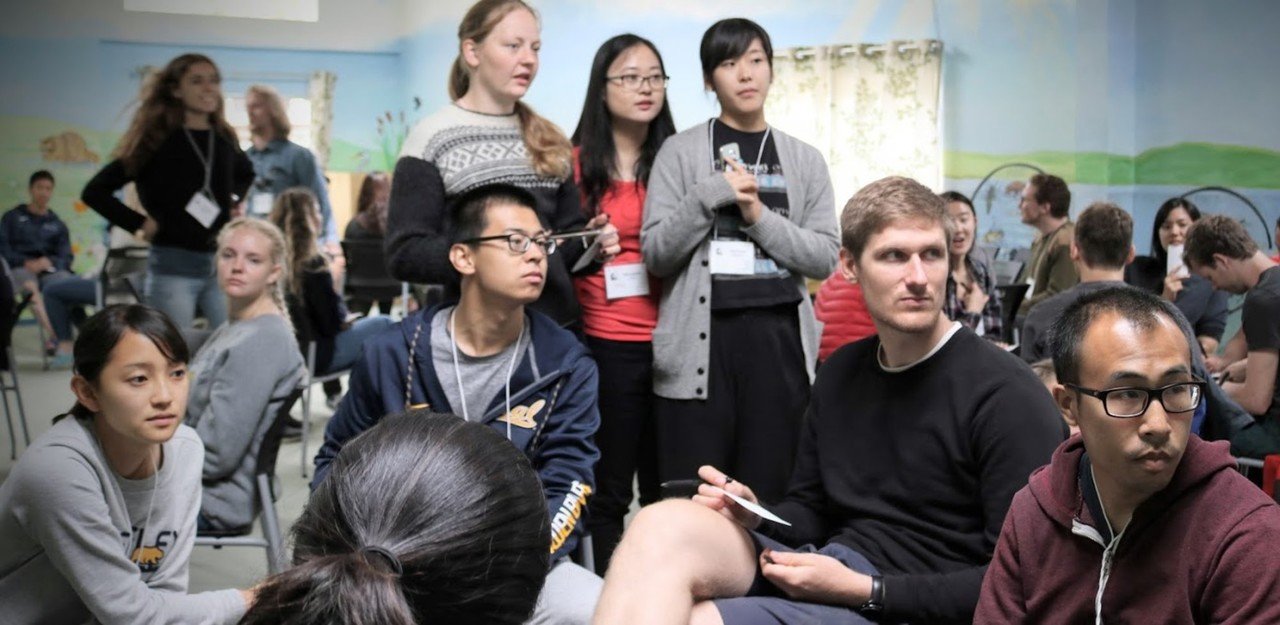Developing True Global Citizens
“Internationalization” has been a buzzword on US campuses for some time now. A frequent goal included in universities’ often grand plans for internationalization is the fostering of “global citizens.” In this piece we present a case that what universities most need in order to be maximally successful in these efforts is to supplement traditional knowledge-based learning with affective and behavioral learning, and to do so consistently and systematically.
Universities come by this challenge honestly: the modern US American [1] university, following Enlightenment ideals, considers itself responsible primarily for the production and transmission of knowledge. This leads to systems that incentivize and reward faculty for publishing and for teaching in traditional classroom environments. To the extent that classes involve anything “international” — such as area studies courses on art, history, philosophy, anthropology, political science, sociology and so on — the preferred customary mode of learning involves students primarily reading, discussing and writing about surface-level aspects of “culture” — artifacts, events, structures and processes — in analytical ways, and as objects of study outside of the students themselves.
How might we equip students with a deeper level of global citizenship learning? In 1956, Benjamin Bloom discovered [2] that human learning takes place primarily in three domains: cognitive (thinking), affective (feeling) and psychomotor/behavioral (doing). “Bloom’s Taxonomy” has become axiomatic among experiential educators (including intercultural educators), but has made little headway in the traditional academy, precisely because the academy has privileged the cognitive domain over the affective and behavioral domains. The problem is that developing global citizens requires significant attention to all three domains.
A fairly straightforward (if somewhat oversimplified) understanding of “global citizen” might be, roughly, someone who can view any given situation from the perspectives of many cultures, and who can readily adapt their behavior in culturally appropriate ways. Superficially this might seem like a fairly low bar to clear, but in reality this sort of person is exceptionally rare, because of the deep affective and behavioral learning that is necessary in order for a person to fit this description — learning which most universities have not traditionally provided.
Universities often point to their study abroad programs as evidence that they are producing global citizens. In 2009, however, the field received a loud wakeup call with the publication of the Georgetown Consortium study. [3] The study found that, according to industry-standard measures of “intercultural competence,” the overwhelming majority of study abroad programs for students from US-based universities produced no significant gains. One characteristic these programs all shared was that they did not provide systematic interventions designed to increase intercultural competence, such as experiential courses providing students with opportunities to reflect on and analyze their emotionally challenging experiences. In the one program that did provide well-designed, systematic interventions, gains in intercultural competence were significant.
Intercultural learning cannot happen when humans feel under threat. Over the millennia, the human organism’s higher-order cognitive functions evolved on top of more primitive, survival-based mechanisms, led by the part of the brain called the amygdala, often quasi-affectionately nicknamed the “lizard brain.” The amygdala’s main job is to detect threats in the environment; difference and unfamiliarity are cues for threat. So when we are confronted with cultural difference, the amygdala becomes especially active (the source of the feelings associated with “culture shock”), and in addition sends inhibitory neural signals to the pre-frontal cortex and to other parts of the brain governing higher-order cognitive functions. We literally can’t think straight when we are confronted with cultural difference. And so we need tools for processing what we’re going through, for analyzing the sources of our feelings, and for adapting our behavior in culturally appropriate ways. That is, we need to engage in a deep and ongoing process of affective and behavioral learning, in addition to cognitive learning.
The good news is that we have everything we need to address this challenge. We know from other recent research [4] that threat reduction is more important than knowledge in reducing prejudice. We also have time-tested tools for engaging students in affective and behavioral learning, such as David Kolb’s Cycle of Experiential Learning, [5] which, when well used, not only help reduce threat, but also help students engage analytically with the unfamiliar. Universities and study abroad providers are beginning to see the wisdom in investing resources in providing the sorts of interventions I’ve been discussing, along with assessing the impact through tools such as the Intercultural Development Inventory and the Intercultural Effectiveness Scale — valid and reliable instruments for assessing the state of the cognitive, affective and behavioral toolkits our students so desperately need in their quest to become global citizens and leaders.
Global challenges rooted in misunderstanding show no signs of going away. As the main vehicles of educating our youth, universities have an opportunity to reshape how we are structuring learning for our students to develop the mindsets and skills to become true global citizens. This will involve reevaluating the traditional university model in many ways, including reprioritizing how we invest our ever-scarcer resources. We look forward to seeing more and more universities take on this challenge.
[1] Following standard practice among interculturalists, we use the term “US American” in recognition of there being many countries other than the US with a rightful claim to “American” identity.
[2] Bloom, Benjamin S., ed. Taxonomy of Educational Objectives: The Classification of Educational Goals, Handbook 1: Cognitive Domain. New York: Longmans, Green and Co. 1956.
[3] Vande Berg, Michael, Jeffrey Connor-Linton, and R. Michael Paige. “The Georgetown Consortium Project: Interventions for Student Learning Abroad.” Frontiers: The Interdisciplinary Journal of Study Abroad 18 (2009): 1-75.
[4] Pettigrew, Thomas F., and Linda R. Tropp. “How Does Intergroup Contact Reduce Prejudice? Meta-Analytic Tests of Three Mediators.” European Journal of Social Psychology 38.6 (2008): 922-34.
[5] Kolb, David A. (1983). Experiential Learning: Experience as the Source of Learning and Development. Englewood Cliffs, NJ, USA: Prentice Hall.

